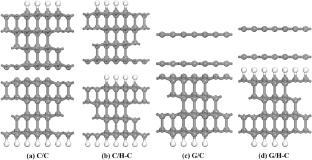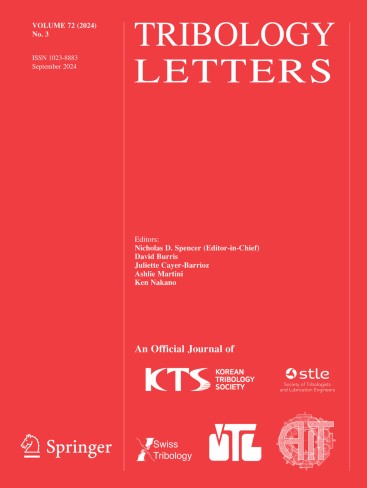Exploring the Key Mechanism of Superlubricity Behavior of DLC Film in Vacuum Environment Based on First-Principles Calculations and Molecular Dynamics Simulation
Abstract
The key mechanisms for the superlubricity of the DLC film in a vacuum environment are considered to be the formation of graphitization at the friction interface and the carbon dangling bonds on the surface of the H-passivated film. However, how the graphitization and H-passivation mechanisms affect the superlubricity of DLC films in a vacuum environment has not been uniformly understood. This paper attempts to explore the influence of the H-passivation and graphitization mechanism on the frictional properties of DLC films by means of first-principles calculations and molecular dynamics simulation and provides an atomic-level view of the super-slip mechanism of DLC films in a vacuum environment. The results show that the separation work of G/C (2.77 J/m2) and C/H–C (0.19 J/m2) is reduced by 80% and 98%, respectively, compared to C/C (13.52 J/m2). However, it is interesting to note that the separation work of the G/H–C interface (0.51 J/m2) is 168% higher than that of the C/H–C interface (0.19 J/m2). The results of the molecular dynamics simulation also show that the C/H–C interface maintains a small and stable frictional force due to the lower interface slip and the lower temperature rise of the interface. Further investigations revealed that the main reason for the higher separation work is the high charge transfer between the G/H–C interface. In short, the H-passivation in a vacuum environment is the key mechanism that determines the superlubricity of DLC films.


 求助内容:
求助内容: 应助结果提醒方式:
应助结果提醒方式:


